Publisher: Amy Marson Creative Director: Gailen Runge Art Director / Book Designer: Kristy Zacharias Editor: S. Michele Fry Technical Editors: Sadhana Wray and Carolyn Aune Production Coordinator: Jenny Davis Production Editor: Joanna Burgarino Illustrator: Wendy Mathson Photo Assistant: Mary Peyton Peppo Photography by Diane Pedersen and Nissa Brehmer of C&T Publishing, Inc., unless otherwise noted NOTE: CD content is available to download from http://tinyurl.com/11026-patterns Introduction When planning projects, I have always been drawn to fairly intricate designs, and over the years, I have experimented with a number of techniques to achieve the results I want. Foundation paper piecing is hands down my favorite way of getting a grip on those little pieces and making sure my points stay pointy! I am very excited to have put together this collection of foundation-pieced projects from some of the most talented modern designers. Foundation piecing can seem quite daunting, especially some of the more complex pictorial blocks. Such blocks can be made up of numerous pieces, which are difficult to keep track of. Then there are the dilemmas of which fabrics to use so the block has a modern feel and what to do with the block once you have made it! To ease you into paper piecing, I have provided an extensive introductory chapter on how to paper piece, and the individual designers share their valuable tips on how to use fabric placement and embellishment to give foundation and freezer paper piecing a modern edge.
The designs in this book range in difficulty and complexity. The calendar quilt is presented in the first half, with paper-pieced designs for each month, along with companion projects that use the same monthly design. Some of the more straightforward, geometric designs are a great starting place for getting your feet wet with paper piecing. After you are warmed up, some of the more intricate, pictorial designs will tempt and challenge you! And because sewing should serve a practical purpose, while also being fun, each paper-pieced design has an accompanying usable project. Because foundation piecing can be a time-consuming process, the projects are mostly small and are designed to inspire you to consider how to include paper piecing in all your sewing projects. We want your paper-pieced projects to be finished and not relegated to the growing work-in-progress (WIP) pile! Many thanks go to the talented designers who participated in this book.
You all are a great inspiration to me, and I am very proud to have been able to work with you. COMPILERS NOTE The online quilting world is a wonderful resource for inspiration and ideas. Below are some useful links to get you started. You can join and see what other quilters have done using the paper-piecing designs in this book, and also share your work. Its fun! flickr.com/groups/PlayfulLittleProjects pinterest.com/ctpublishing fatquarterly.com/books  Foundation piecing involves using a paper or fabric foundation as a sewing guide and stabilizer to create a precisely pieced design. The term foundation piecing actually includes a variety of techniques that vary depending on the block design or the quilters preference.
Foundation piecing involves using a paper or fabric foundation as a sewing guide and stabilizer to create a precisely pieced design. The term foundation piecing actually includes a variety of techniques that vary depending on the block design or the quilters preference.
The designs in this book use two techniques, with most projects requiring only the first: Basic foundation piecing Freezer paper foundation piecing Each method has its advantages and disadvantages, and you can experiment to find what works best. You need not limit yourself to only one approach; in fact, some designs in this book mix and match techniques within the same block. TRANSFER THE DESIGN Regardless of the foundation-piecing method, youll need to transfer the pattern onto your chosen foundation material. You can print designs from CD content is available to download from http://tinyurl.com/11026-patterns directly from your computer onto regular printer paper or sheets of paper specifically designed for foundation piecing. TIP In basic foundation piecing, the finished block will be the mirror image of the original design. With symmetric designs such as snowflakes, this is not important.
And for some asymmetric designs, such as fruits or trees, the design might work either way, depending on your block. But in other cases, the reversal definitely matters; so, when making the letter N, keep this reversal in mind! The foundations on CD content is available to download from http://tinyurl.com/11026-patterns included with this book are already reversed for you. You can find a variety of foundation papers and freezer paper, cut to fit your printer, on the C&T website (ctpub.com). 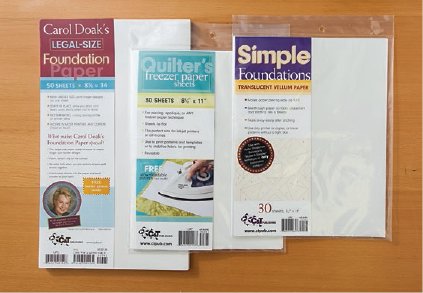 Sheets of newsprint, freezer paper, and foundation papers are also available on the Electric Quilt Company website (electricquilt.com). When printing a design onto foundation paper, if Page Scaling is available in the Print Options, be sure to set it to 100% or None, to ensure that the pattern is printed without distortion.
Sheets of newsprint, freezer paper, and foundation papers are also available on the Electric Quilt Company website (electricquilt.com). When printing a design onto foundation paper, if Page Scaling is available in the Print Options, be sure to set it to 100% or None, to ensure that the pattern is printed without distortion. 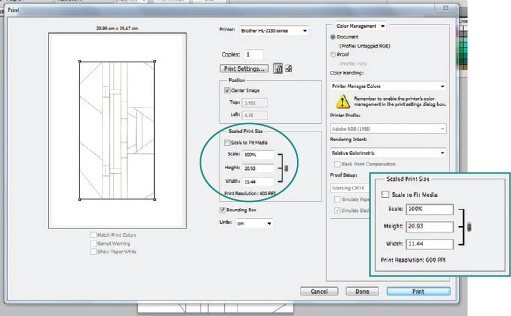 If youre not printing from a computer directly onto the foundation material, you can trace from photocopies onto the foundation using a lightbox or by holding the foundation and design up to a window.
If youre not printing from a computer directly onto the foundation material, you can trace from photocopies onto the foundation using a lightbox or by holding the foundation and design up to a window.
Before tracing, tape both layers in place to prevent either from shifting. TIP If youre using freezer paper, trace designs onto the matte side. Trim the foundation, leaving around the edge of the design. It is much easier to sew the design without excess foundation getting in the way. BASIC FOUNDATION PAPER PIECING In basic foundation piecing, you place the first piece of fabric wrong side against the unprinted side of the foundation, then position the second piece and line up the seams. Sew exactly on the line on the printed side of the foundation through the paper and the fabric layers.
As you machine sew to add each piece of the design, make sure the right side of the design faces down. Foundations Foundations can be either temporary or permanent. Temporary foundations, such as vellum, printing paper, and freezer paper, are torn away after the design has been stitched together. Permanent foundations, such as interfacing, muslin, or other lightweight cotton fabrics, remain in place in the finished project. The type of foundation you use may depend on your finished project. Temporary foundations are great for avoiding bulkfor instance, when making quilts.
Permanent foundations may be more useful when making very small pieces or when you want the finished design to be a little stifferfor instance, when making bags. Preparation Make three copies of the designone on the foundation of your choice and two on printer paper. One of the printer paper copies will be used as a cutting guide, and the other will be a master reference for piecing the design. One oft-heard grumble about foundation piecing is fabric wastage. It is difficult to estimate the size of a scrap of fabric for an awkwardly shaped piece of the design. Make an additional copy of the design to use as a cutting guide to take the guesswork out of cutting fabric scraps.
For each piece in the design, cut out the corresponding piece from the cutting guide and lay it right side up on the wrong side of the fabric. Cut out the fabric, leaving about seam allowance all the way around. This seam allowance allows a little wiggle room for piecing, while also preventing fabric wastage. 
Next page
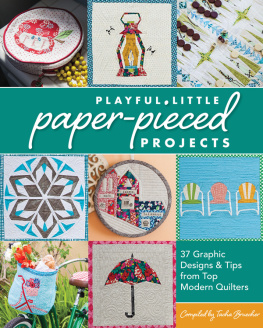
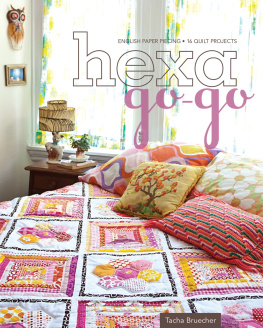
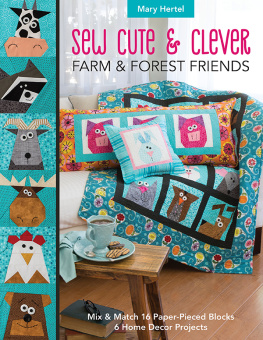
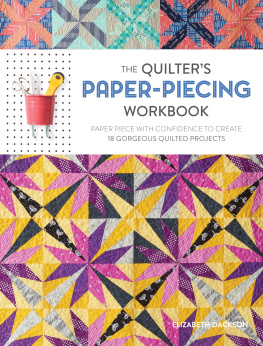
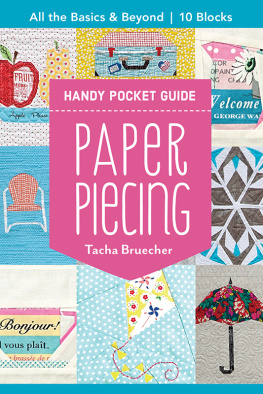
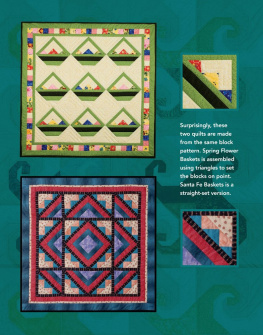
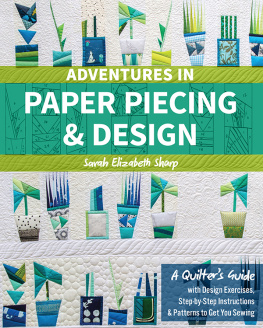

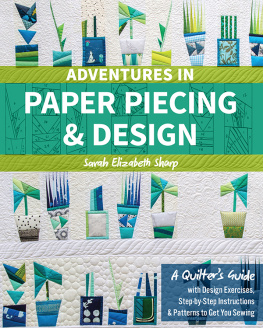
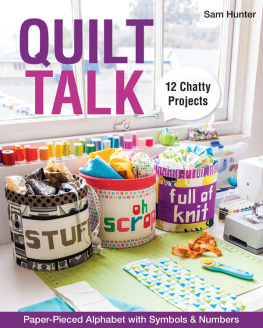
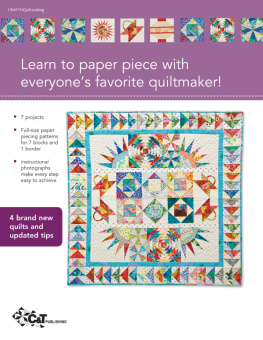
 Foundation piecing involves using a paper or fabric foundation as a sewing guide and stabilizer to create a precisely pieced design. The term foundation piecing actually includes a variety of techniques that vary depending on the block design or the quilters preference.
Foundation piecing involves using a paper or fabric foundation as a sewing guide and stabilizer to create a precisely pieced design. The term foundation piecing actually includes a variety of techniques that vary depending on the block design or the quilters preference. Sheets of newsprint, freezer paper, and foundation papers are also available on the Electric Quilt Company website (electricquilt.com). When printing a design onto foundation paper, if Page Scaling is available in the Print Options, be sure to set it to 100% or None, to ensure that the pattern is printed without distortion.
Sheets of newsprint, freezer paper, and foundation papers are also available on the Electric Quilt Company website (electricquilt.com). When printing a design onto foundation paper, if Page Scaling is available in the Print Options, be sure to set it to 100% or None, to ensure that the pattern is printed without distortion.  If youre not printing from a computer directly onto the foundation material, you can trace from photocopies onto the foundation using a lightbox or by holding the foundation and design up to a window.
If youre not printing from a computer directly onto the foundation material, you can trace from photocopies onto the foundation using a lightbox or by holding the foundation and design up to a window.